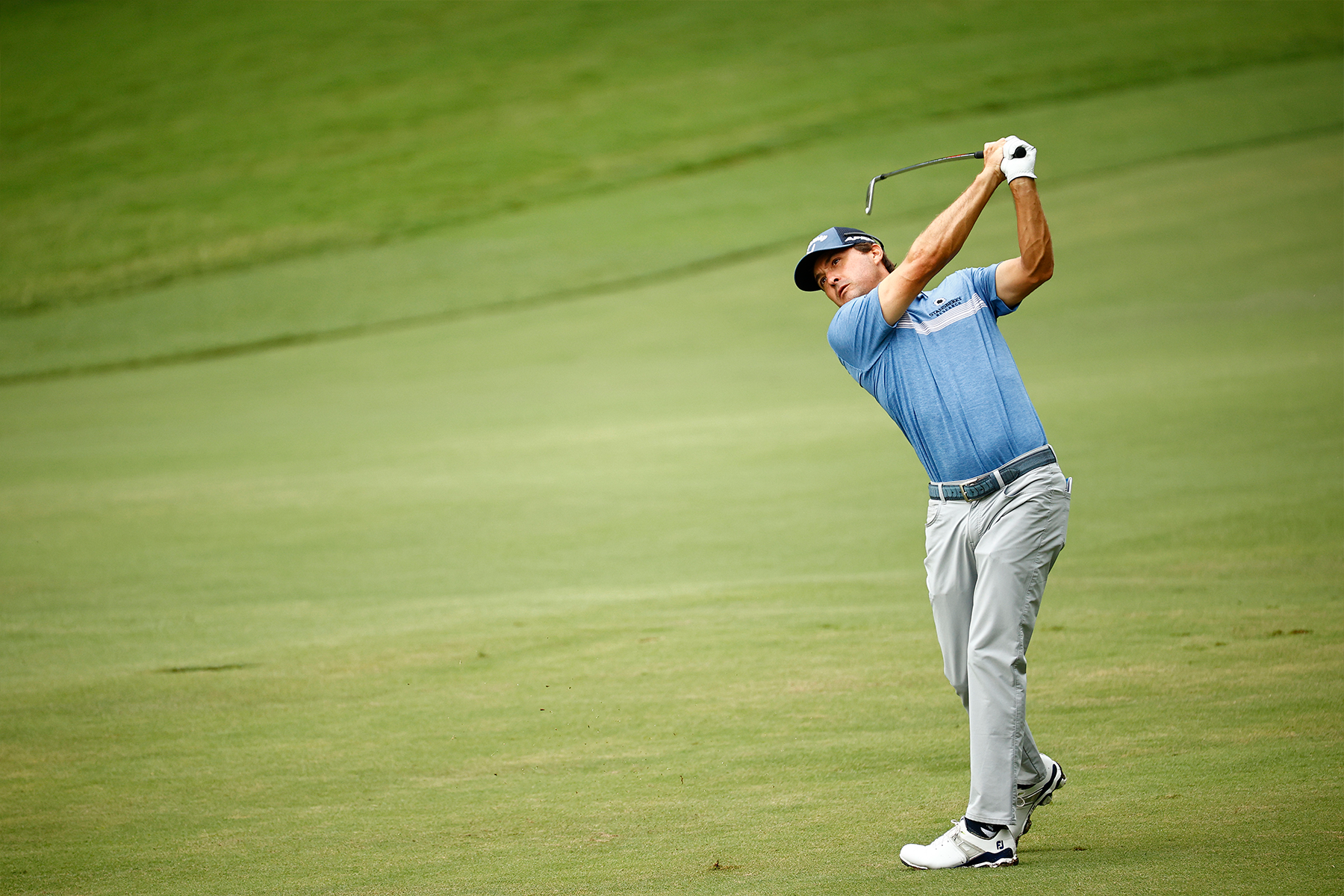quick coaching
All You Need to Know to Handle Uphill & Downhill Lies on the Golf Course
By Keith Stewart, PGA
Published on

Kevin Kisner of the United States plays an approach shot on the sixth hole during the final round of the Wyndham Championship at Sedgefield Country Club on August 15, 2021 in Greensboro, North Carolina. (Photo by Jared C. Tilton/Getty Images)
Kevin Kisner secured his fourth win on tour this weekend by showing some serious PGA Tour talent navigating Sedgefield Country Club. This classic Donald Ross design is known for its heavily sloped green complexes. If you were watching the golf on Sunday, the greens weren’t the only hilly areas. On the 17th hole, Kisner had a wedge approach shot from an uphill lie. One he struck close, but a challenge nonetheless.
Conversely, on his final approach, Kisner struck a nifty 9-iron into the green from a downhill fairway lie. Golf fans love Kisner for his gritty style, press-room candor and fabulous flatstick skills.
PGA Coaches give countless clinics and academies every year covering the details surrounding a successful approach to a downhill or uphill lie. Every golfer should print out this page or take a picture with their phone of the following chart.
A Guide to Uphill & Downhill Lies
| Uphill | Downhill |
Ball Position | Forward | Back |
Shoulders | Lead high, trail low | Trail high, lead low |
Weight | Trail foot | Lead foot |
Flight | Pull miss | Push miss |
The fundamentals of hitting shots from uneven lies are very important. We encounter uphill and downhill lies all the time throughout the course of a round. Please don’t confuse uphill and downhill lies with sidehill lies.
Playing golf presents an endless number of details, so here’s a step-by-step guide to evaluating the lie and then changing your setup to account for the slope you encounter. Follow these simple steps and your contact will be much better on the hills.
Once you determine the slope, take your stance with the ball slightly more toward the higher leg. Adjust your aim according to the chart. Actually aim to account for the shot movement. If you are planning an uphill shot, aim more left if you are a right-handed golfer. Establish your stance/balance by feeling more of your weight on the lower (downhill) leg. Finally, take your shoulder line and make it parallel to the slope. If you’re hitting downhill, your lead shoulder will feel lower than your trail shoulder. Here’s a small summary.
1. Determine the slope (Is it uphill, downhill or sidehill?)
2. Take your stance and set your new ball position
3. Aim accordingly
4. Feel your weight
5. Match your shoulders
6. Hit your shot
2. Take your stance and set your new ball position
3. Aim accordingly
4. Feel your weight
5. Match your shoulders
6. Hit your shot
Making calculated adjustments during your round depending on the lie situation can really make a positive impact on your score. These elements led to Kisner’s victory. Kevin is known for saying, “This ain’t no hobby!” when describing his ability. His mantra makes perfect sense. When it comes to playing and paying attention to golf’s details, we need to treat it like work as well…
